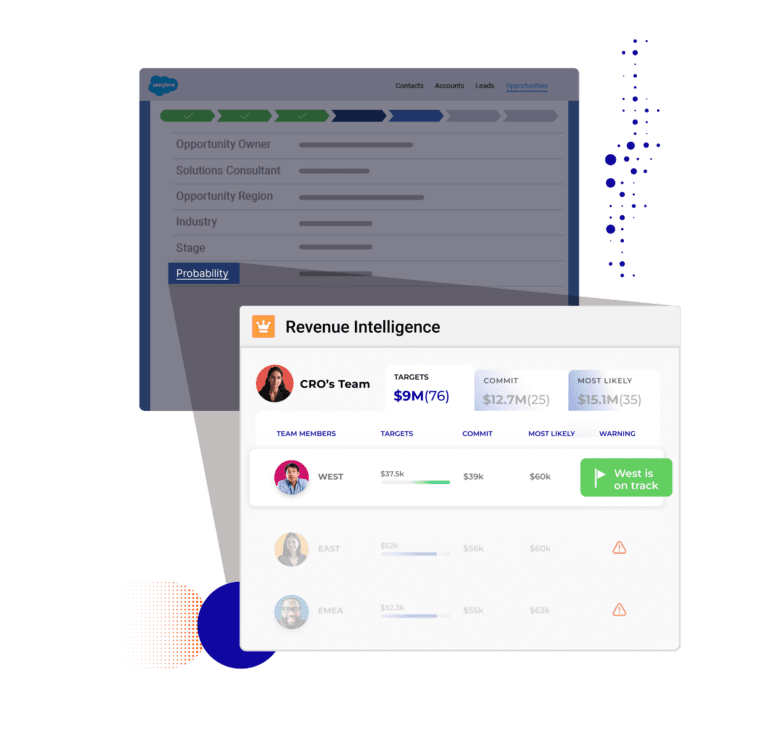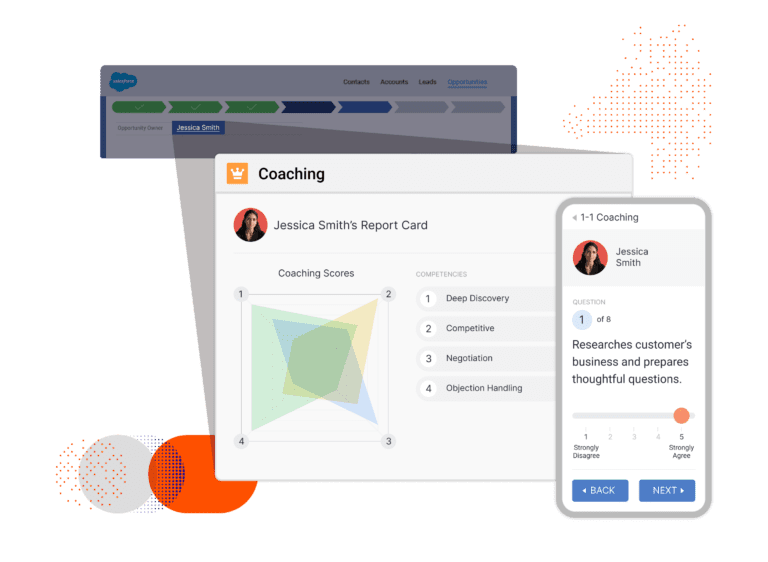Too many organizations struggle with disjointed strategies and siloed departments across their sales, marketing, and customer success teams.
And those same organizations are all working toward closing deals faster, launching targeted and effective marketing campaigns, and satisfying their customers.
Revenue operations is often the missing link between go-to-market teams and a key driver of alignment and success.
According to research from the Boston Consulting Group, companies that invest in revenue operations report a 10-20% increase in seller productivity.
According to the Boston Consulting Group
Many teams, tasks, and processes are involved in generating revenue — and that’s why every company needs a solid revenue operations strategy.
Also called RevOps, this function unites different parts of a business to ensure that everyone and everything is pushing in the same direction. That direction, naturally, is wherever the revenue is.
Here’s the ultimate guide to RevOps strategies and how to leverage them.
What is revenue operations (RevOps)?
If you want a revenue operations definition, be prepared to find some differing data. Although RevOps is basically a process for driving revenue productivity by uniting marketing, sales and customer service teams, every business does it a little differently.
Fortunately, there’s no single “right” way to build a revenue operations model. It just has to check a few key boxes:
Align go-to-market teams
Improve data visibility
Streamline processes
Grow predictably
If your RevOps implementation does all these things, it can have significant benefits. In fact, with revenue operations and intelligence solutions at their fingertips, surveyed companies achieved:
- 65% more accurate forecasts.
- 59% improvement in win/loss rates.
- 69% higher revenue growth.
- 53% increase in net-dollar retention.
Need one more reason to consider a RevOps strategy? How about this one: 93% of surveyed companies are either already leveraging a revenue operations model or plan to by 2024.
What problems does a RevOps strategy solve?
RevOps implementation isn’t just about revenue enablement. No — this process can go much deeper to create stronger procedures, collaboration and visibility across departments.
Here are just a few problems solved by RevOps strategies:
What happens if your marketing, sales and customer teams never see eye-to-eye? You could miss certain revenue opportunities and make others far harder to reach. RevOps helps unite these teams by clarifying their relationships with one another and empowering them to play their parts more effectively. That doesn’t just boost morale; it also increases agility, efficiency, customer satisfaction, and more.
Disorganized or inefficient sales cycles can cause chaos across teams. With a RevOps strategy, you can streamline individual processes, see how they all fit together and identify their role in creating revenue. With this information, it’s easier to elevate vital tasks and eliminate redundancies, bottlenecks or other frustrations.
Inaccurate revenue intelligence can lead to flawed forecasting — which, in turn, creates misaligned teams, ineffective strategies, and wasted effort. One of the goals of a revenue operations model is to identify these gaps and address them with real-time data informed by multiple teams. That means you’ll have a more accurate view of opportunities and growth — a single source of truth.
When your teams don’t work well together and your approaches are jumbled, customers feel the impact. With the right RevOps best practices, you can streamline internal processes to ensure that every task, solution, and team is supporting the overall buyer experience. That boosts revenue and customer satisfaction.
When you aren’t focused exclusively on your audience, your GTM costs skyrocket as you scramble to decipher what works and what doesn’t. RevOps tools don’t just help you organize your approach — they also ensure you’re looking in all the right places when making decisions and planning GTM strategies.
What are the key metrics for revenue operations?
Like just about everything else in business, RevOps strategies need consistent tracking and analysis. That’s the only way to ensure your efforts are paying off and that you’ve chosen all the proper approaches for your needs.
As you build your own revenue operations definition, keep these key metrics in mind:
- Customer acquisition cost: This is the cost of acquiring each customer. With this information, you can compare cost vs. revenue and pursue the most lucrative opportunities.
- Sales cycle length: The more time it takes to close a deal, the longer your sales cycle length. RevOps strategies will generally help you reduce this number.
- Deal win/loss rate: To find your win/loss ratio, take your wins and divide them by total sales opportunities. This helps you identify where problems may be occurring and what RevOps solution could help.
- Sales forecasting: This metric goes far beyond any single department to help you see how much potential revenue you’re actually capturing.
- CLV (customer lifetime value): CLV is a measurement of how much money a customer brings to your business throughout the relationship. You can use CLV to help identify the best sales opportunities and bolster your RevOps implementation.
- Customer churn: If you have a high churn rate, that means lots of customers are leaving your business. RevOps strategies can help you catch these issues, determine where they’re coming from and put fitting solutions in place.
- Annual recurring revenue (ARR): ARR is all about measuring the revenue you can count on over time, such as subscriptions or regular billing cycles. It’s helpful to compare this metric with others such as sales forecasting and customer acquisition cost.
- Sales pipeline conversion rate: Find out how many leads are being converted and what parts of your sales pipeline are most important in this process.
Almost all revenue operations best practices require data from these areas. To make the most of this information, you’ll need RevOps software that can accurately capture data from multiple sources and present it to all relevant stakeholders. (Tip: Automatic data capture is key.)
How does revenue operations work and what are the roles of RevOps team members?
Although every revenue operations responsibility should fall to a specific team member, companies distribute these tasks differently. Various titles include:
RevOps Manager
Chief Revenue Officer
VP of Revenue Operations
Director of Revenue Cycle
Job descriptions for any revenue operations role typically include accountability, collaboration and a solid understanding of the revenue operations model. High-level employees are responsible for connecting processes across departments, interpreting key metrics, driving growth and supporting all the interconnected parts of the larger RevOps team.
The work is data-driven and collaborative, so RevOps leaders generally draw on experience in revenue-focused fields to empathetically respond to sales, marketing and customer success teams simultaneously.
Although the roles and responsibilities differ, the goal is always the same: to help the whole company drive revenue. That means anyone involved in RevOps implementation should have skills such as:
- Strategic planning
- Negotiation
- Communication
- Data management
- Process optimization
How is RevOps different from sales operations and marketing operations?
Although part of a revenue operations solution is to bring sales and marketing together, RevOps is greater than — and much different from — the sum of its parts. Here’s a closer look:
Revenue operations vs. sales operations
Sales operations is, unsurprisingly, focused on sales. This is great news for your reps, who benefit from processes dedicated to their needs, challenges and success. However, sales operations is somewhat limited in this regard.
Revenue operations, on the other hand, tells the whole story of the customer journey. Instead of focusing on sales exclusively, RevOps looks at how sales operations connect to other revenue-driving parts of your business.
Revenue operations vs. marketing operations
Although marketing and sales are closely related, marketing operations is built around tasks exclusive to the former. Essentially, this is the marketing team’s chance to be the star of the show, emphasizing processes and interactions other teams may not have to worry about.
RevOps doesn’t replace marketing operations. It just unites this approach with sales operations and other parts of the business to create a more comprehensive view of revenue activity.
Revenue operations vs. customer success operations
Customer success operations is all about answering questions, addressing complaints and delivering top-notch service. Although these processes are highly influenced by marketing and sales, customer success operations is focused specifically on anything the service team is responsible for.
Just like in the other two examples, revenue operations takes these processes and weaves them into other revenue-driven operations. RevOps maintains service and support priorities but puts them in a larger, more comprehensive context to better understand and respond to the customer experience.
Your RevOps strategy
Simply put, RevOps is what happens when you look at all the other operations and see how they fit together, somewhat like assembling a puzzle. It creates something entirely new, but the original pieces are still there and continue to be important.
How Mindtickle helps you get started with revenue operations
RevOps may solve a lot of problems, but it has a lot of moving parts, too — from differing roles and responsibilities to a long list of important metrics. How do you ensure all these things come together to create a single revenue operations strategy?
The key is to use the right RevOps software — and that’s where Mindtickle comes in.

Although Mindtickle can be called a RevOps platform, it’s a whole lot more than that. Combining revenue intelligence, data capture, sales training, forecasting, and more, this software acts as your hub for anything and everything revenue-related. That means all your processes will happen in one place, enabling teams to collaborate more effectively and data to flow more naturally. You’ll have:
- Conversation intelligence
- Sales forecasting
- Digital Sales Rooms
- Sales content management
- Coaching and training


When every revenue operations responsibility, task, and solution exists under a single umbrella, it’s easier to ensure that customers get a cohesive, connected experience. That’s not just good news for your bottom line — it’ll make for happier customers, too.
Mindtickle in Action
See what Mindtickle can do for your sales enablement and revenue operations.
Get a DemoThis post was originally published in June 2023 and was updated in December 2023.







